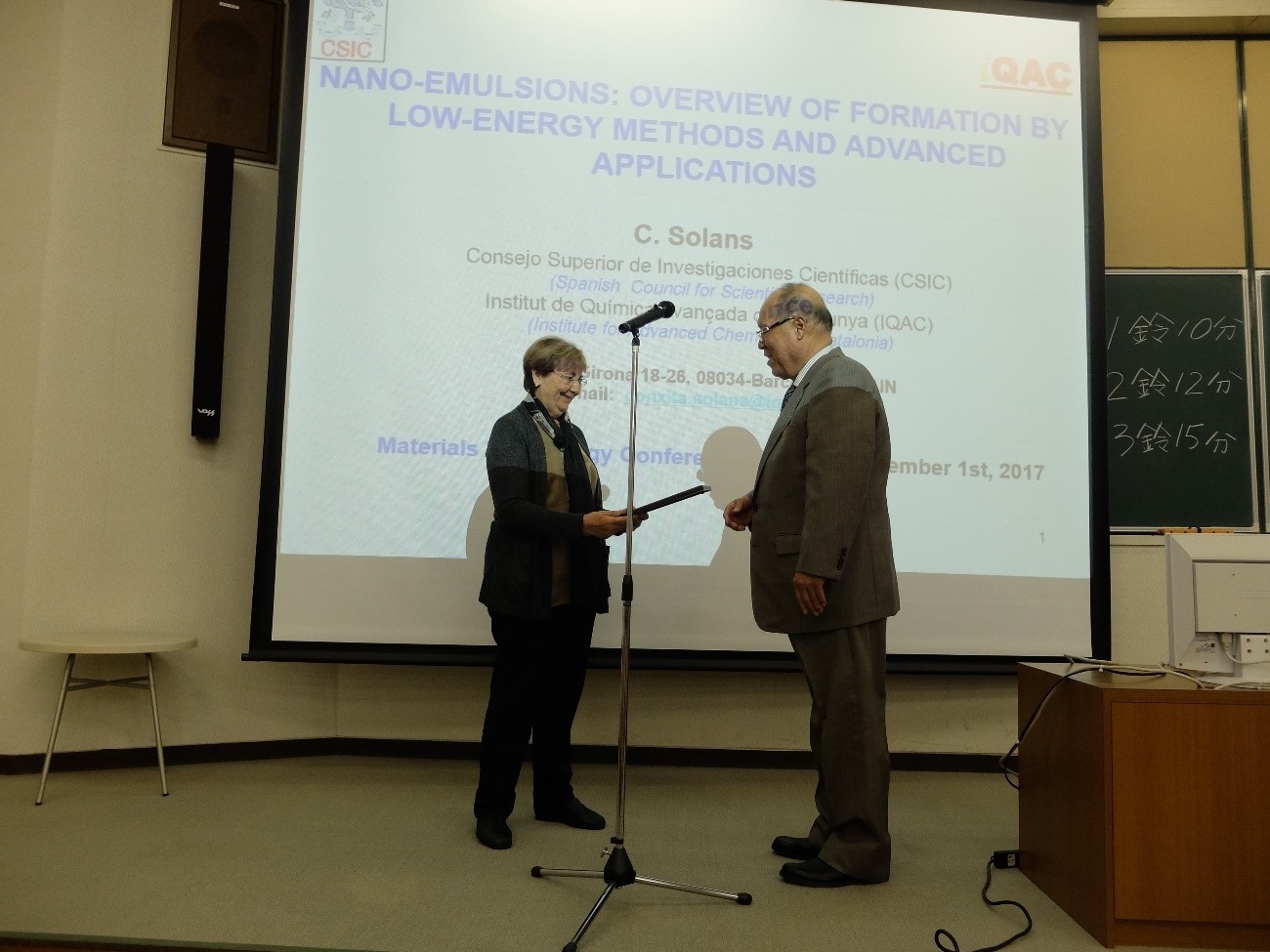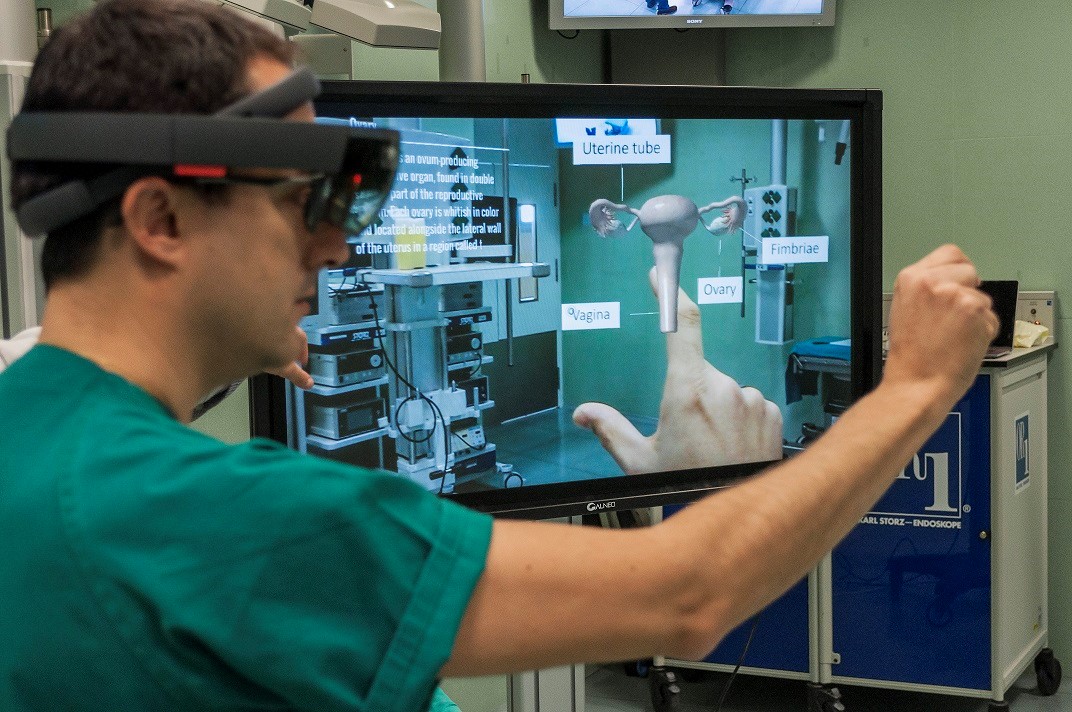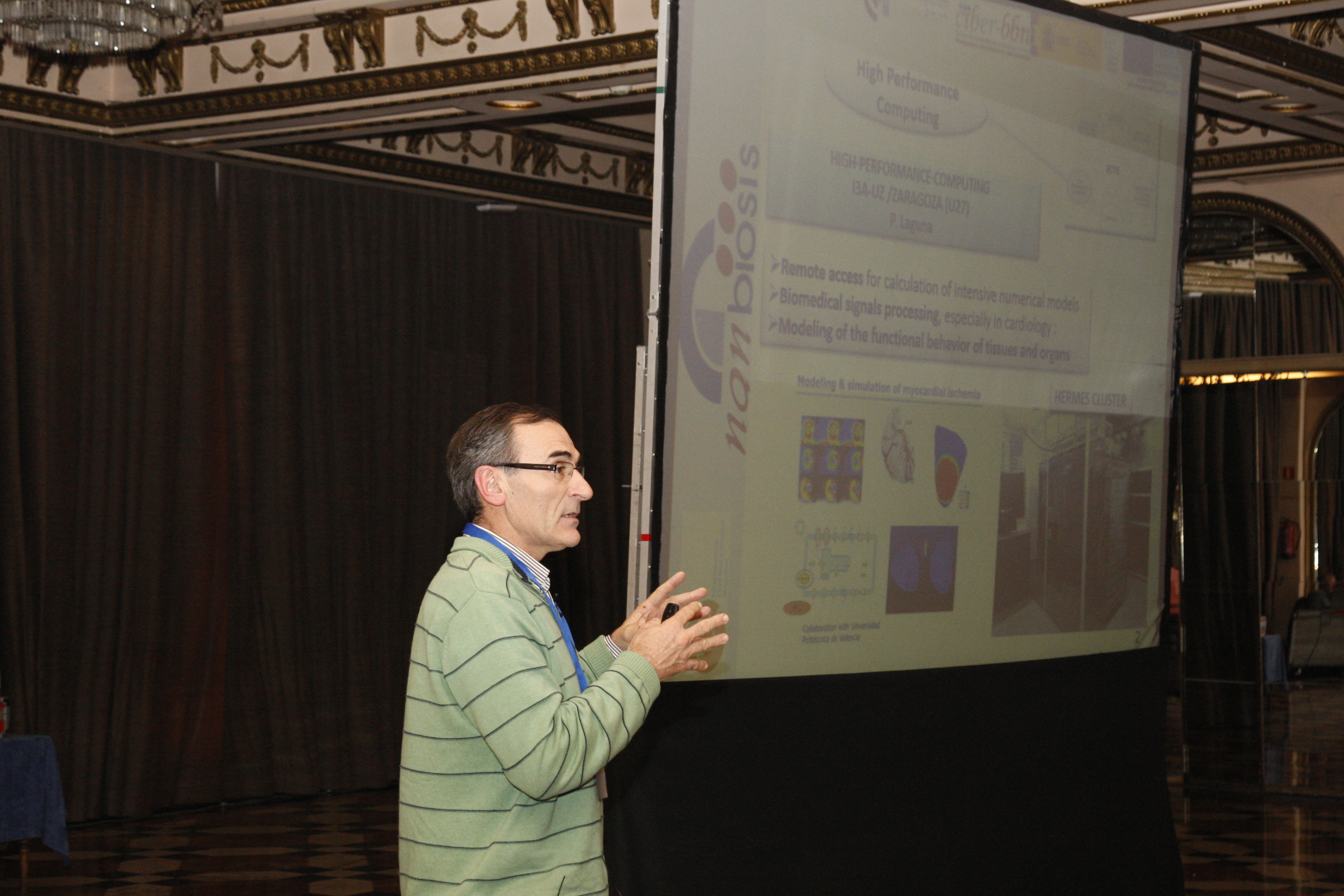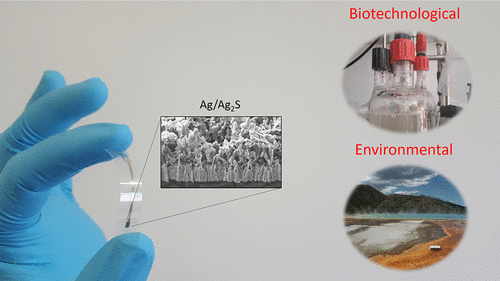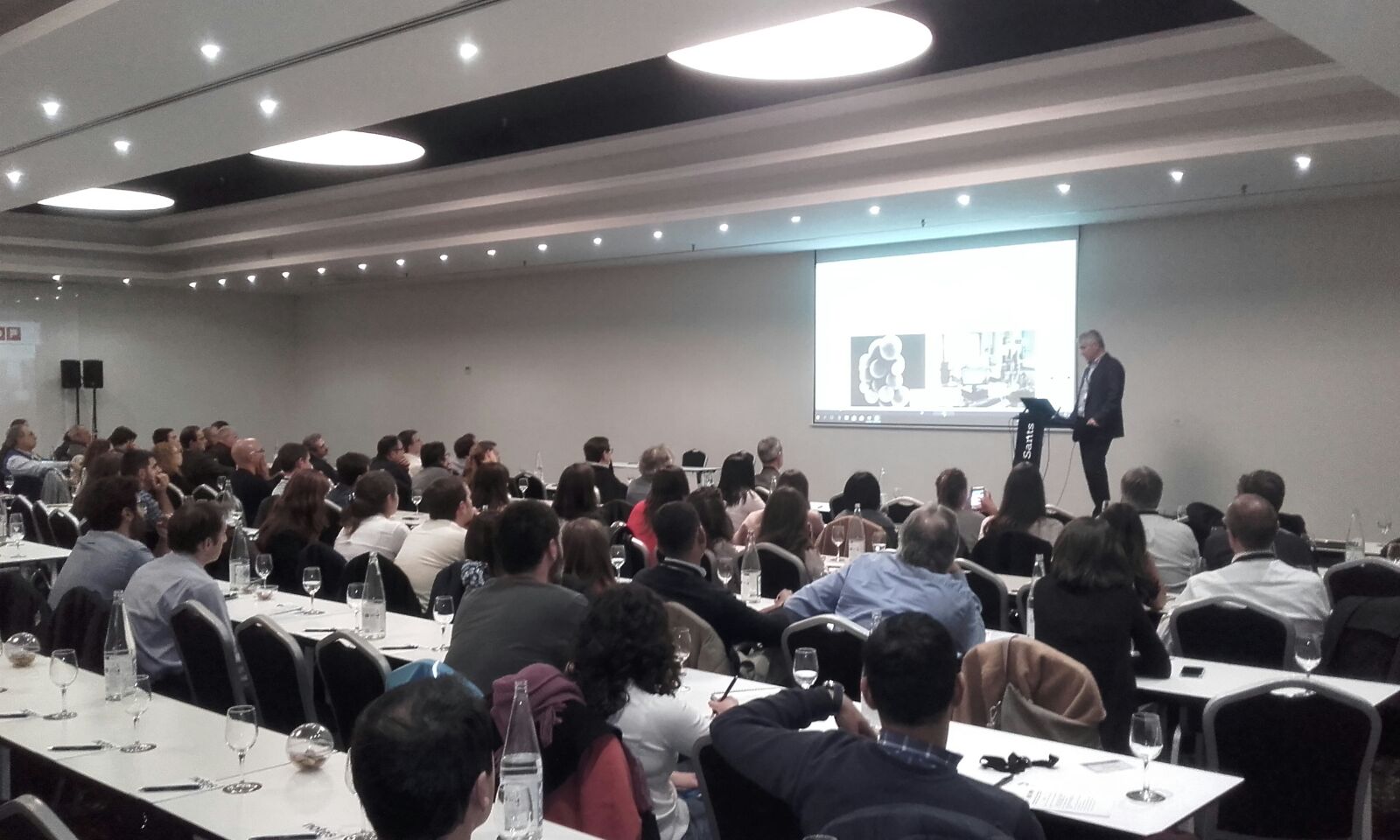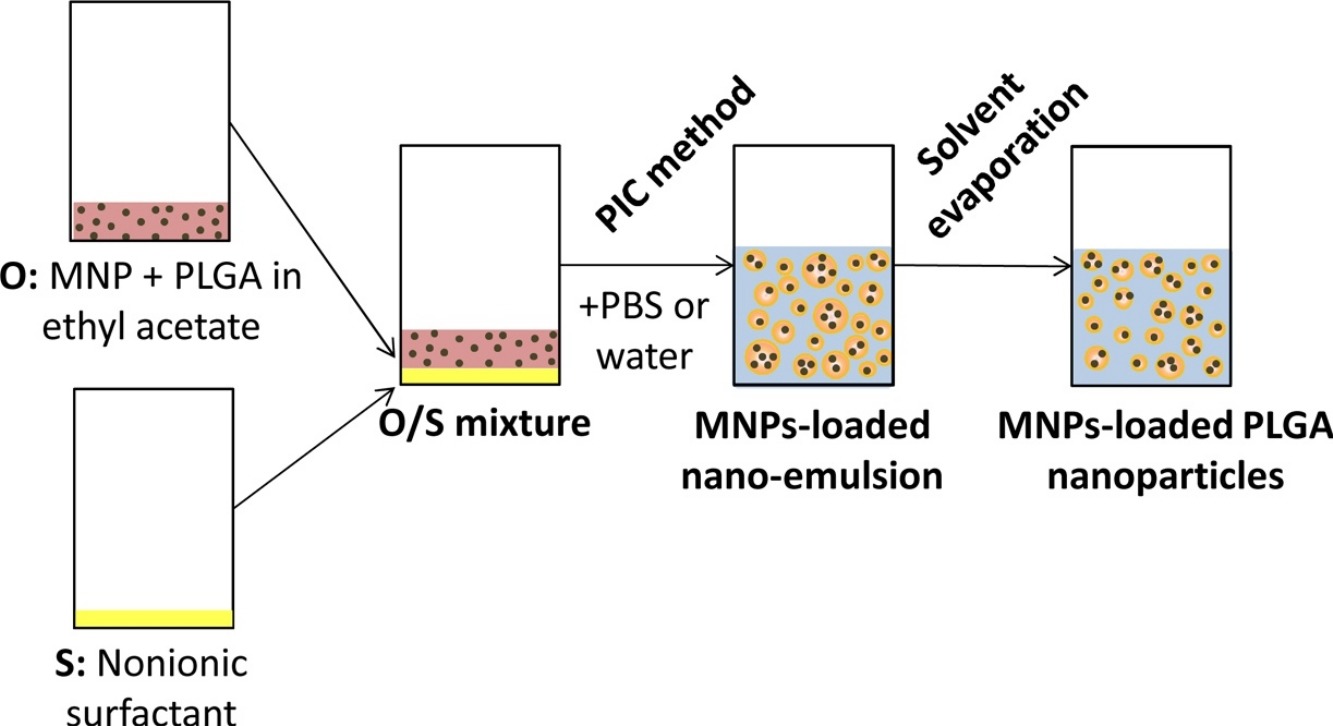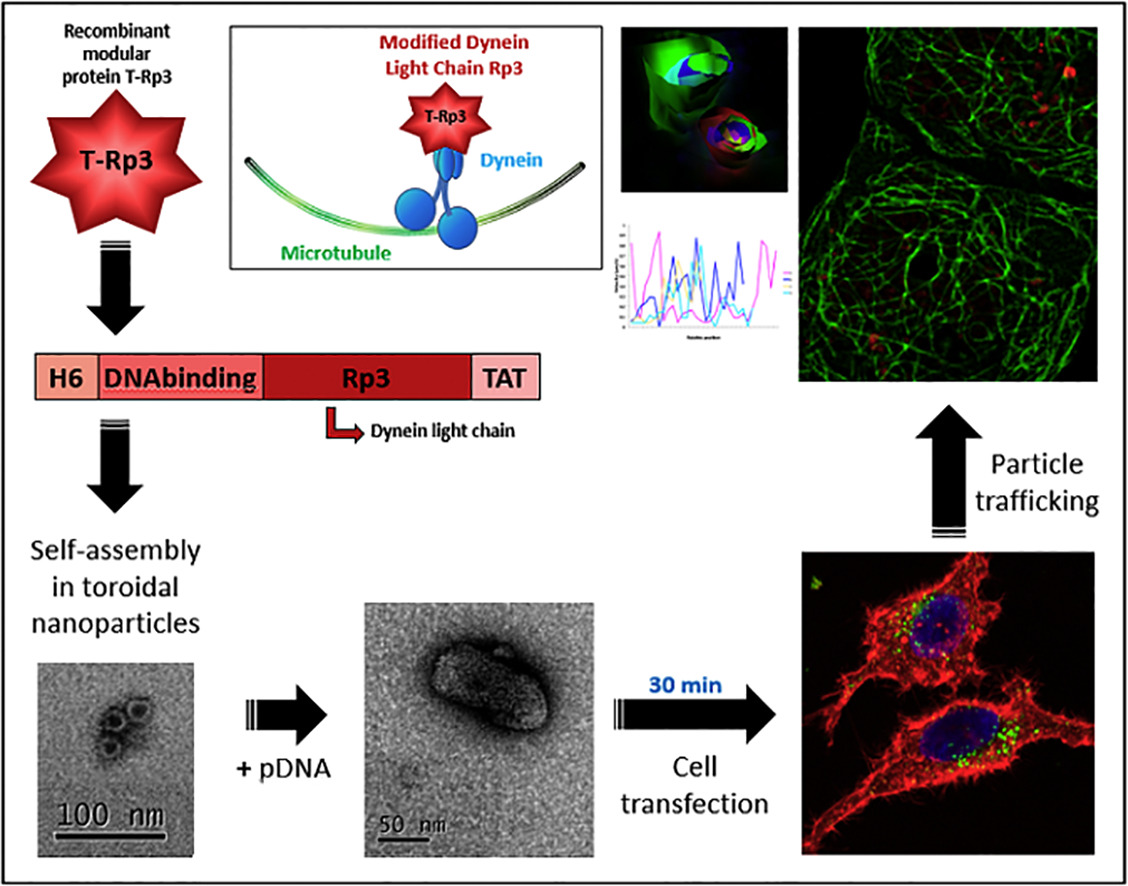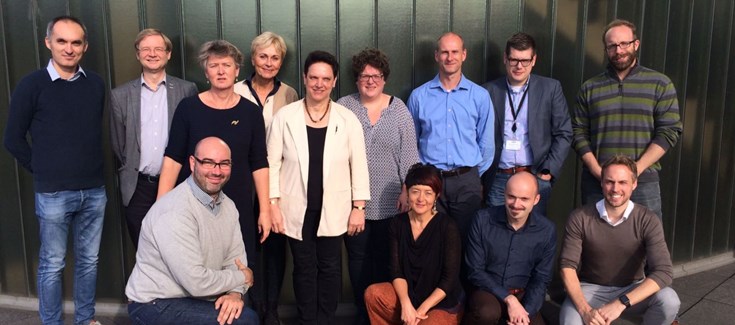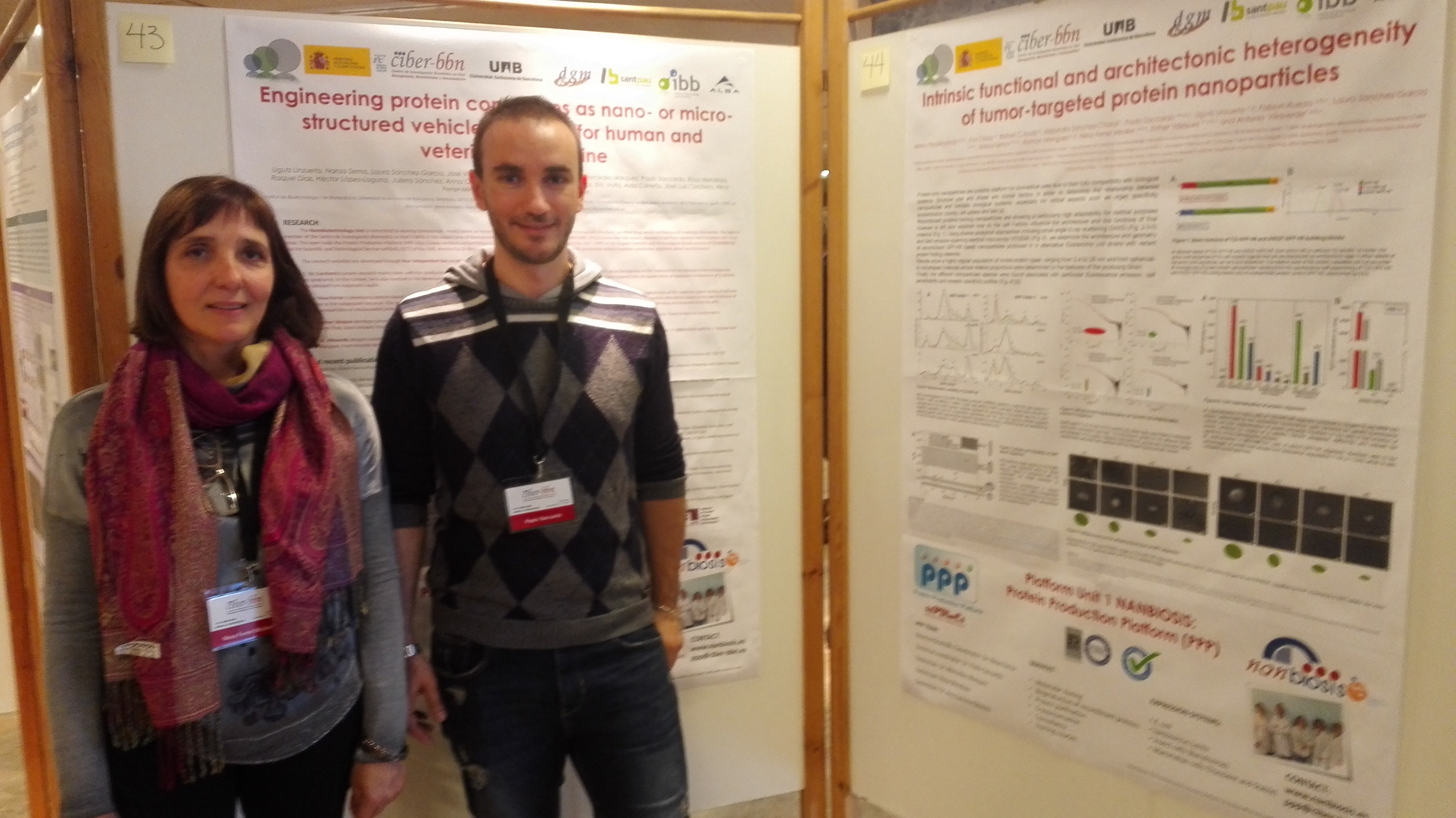Conxita Solans receives the lectureship award of the Japan Research Institute of Materials Technology
Prof. Conxita Solans (Nanostructured liquid characterization unit 12 of NANBIOSIS) received the lectureship award of the Japan Research Institute of Materials Technology from Prof. Masahiko Abe, Director of the Institute. Prof. Solans delivered her lecture during the meeting held in Noda (Japan) on December 1st, 2017.
